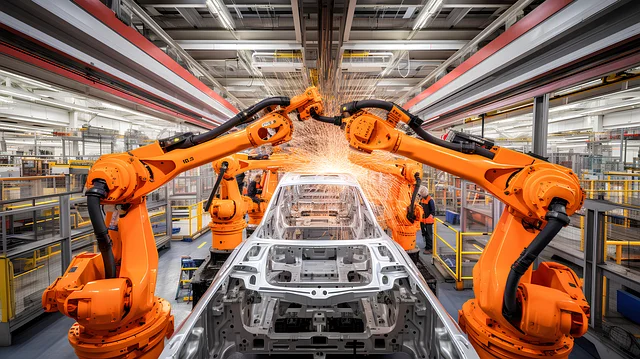Automation solutions in automotive manufacturing streamline the production process, enhance efficiency, and improve quality. By integrating technologies like robotics, AI, and IoT, manufacturers can optimise assembly lines, reduce human error, and adapt to changing market demands. Automation not only speeds up processes but also ensures precision in tasks such as welding and painting. As the industry evolves, embracing these solutions becomes essential for staying competitive and meeting stringent safety and environmental standards. Thus, investing in the right automation technologies is crucial for the future success of automotive manufacturers.
In today’s fast-paced automotive industry, manufacturers are constantly seeking ways to enhance efficiency, reduce costs, and maintain high-quality standards. Automation has become a key factor in achieving these goals. But with a myriad of technologies and solutions available, how do you choose the right automation tools for your automotive manufacturing needs? In this blog post, we’ll explore the crucial steps and considerations that will help you make informed decisions.
Understand Your Manufacturing Needs
The first step in selecting the right automation solutions is to thoroughly understand your current manufacturing processes and identify areas where automation can have the most significant impact. This involves mapping out your production line to pinpoint bottlenecks, inefficiencies, or quality issues. Whether it’s assembly, welding, painting, or packing, each process might benefit differently from automation.
Evaluate Automation Types
Once you’ve identified the areas in need of improvement, the next step is to evaluate the types of automation technologies available. In automotive manufacturing, this could range from robotic arms for assembly tasks to automated guided vehicles (AGVs) for material handling. Each type of automation has unique benefits and is suitable for different applications. For instance, robotics are ideal for tasks requiring high precision and repeatability, while AGVs are excellent for improving logistics and reducing material handling costs.
Consider Scalability and Flexibility
Rapid changes in design and consumer demand mark the automotive industry. Therefore, the automation solutions you choose must not only meet your current needs but also be scalable and flexible enough to adapt to future requirements. Modular automation systems that can be easily upgraded or reconfigured are particularly valuable as they allow you to respond quickly to new market trends or changes in production volumes.
Partner with the Right Suppliers
Choosing suppliers who have extensive experience in the automotive industry and a robust understanding of its unique challenges is essential. These partners can provide not only the technology but also valuable insights and support to ensure successful implementation. For example, Electronics International is a leading provider of automation solutions that has been instrumental in transforming automotive manufacturing processes. With a focus on innovation and customer support, IDE Electronics International offers a range of products that enhance production efficiency and product quality.
Assess Integration Capabilities
A critical aspect of selecting the right automation solutions is assessing how easily they can integrate with your existing systems. Seamless integration ensures that new automation technologies can communicate effectively with your current equipment and software, minimising disruptions and maximising efficiency across the production line. This is where choosing the right partners and suppliers becomes crucial.
Calculate Return on Investment
Another important factor is the financial aspect of automation. It’s vital to calculate the potential return on investment (ROI) from automating specific processes. Consider both direct benefits, such as labour cost savings and increased production volumes, and indirect benefits, like improved product quality and reduced waste. A detailed cost-benefit analysis will help you prioritise automation investments that offer the best returns.
Plan for Employee Training and Transition
Implementing automation in your manufacturing processes isn’t just about installing new equipment; it’s also about ensuring your workforce is prepared to operate and maintain this technology. Effective training programs are essential for helping your employees transition to new roles or learn how to manage automated systems. Moreover, addressing any workforce concerns about automation early on can help foster a positive attitude toward the new technology.
Test Before Full Implementation
Pilot tests or simulations are advisable before fully integrating any new automation system. This allows you to see how the solution performs within your existing setup and make necessary adjustments before rolling it out completely. Testing helps mitigate risks associated with deploying new technology and can provide insights into further optimisation.
Stay Informed and Flexible
Lastly, keeping abreast of the latest advancements in automation technology is key to maintaining a competitive edge in the automotive industry. Attend industry seminars, workshops, and trade shows to learn about new solutions and trends. Staying flexible and willing to adapt to new technologies as they arise will ensure your manufacturing processes remain at the forefront of efficiency and innovation.
Conclusion
Choosing the right automation solutions requires a careful and informed approach. By understanding your specific manufacturing needs, evaluating the available technologies, and partnering with experienced suppliers like IDE Electronics International, you can ensure that your investment in automation pays off. Embrace the future of automotive manufacturing with confidence by selecting automation tools that enhance productivity, quality, and profitability.







